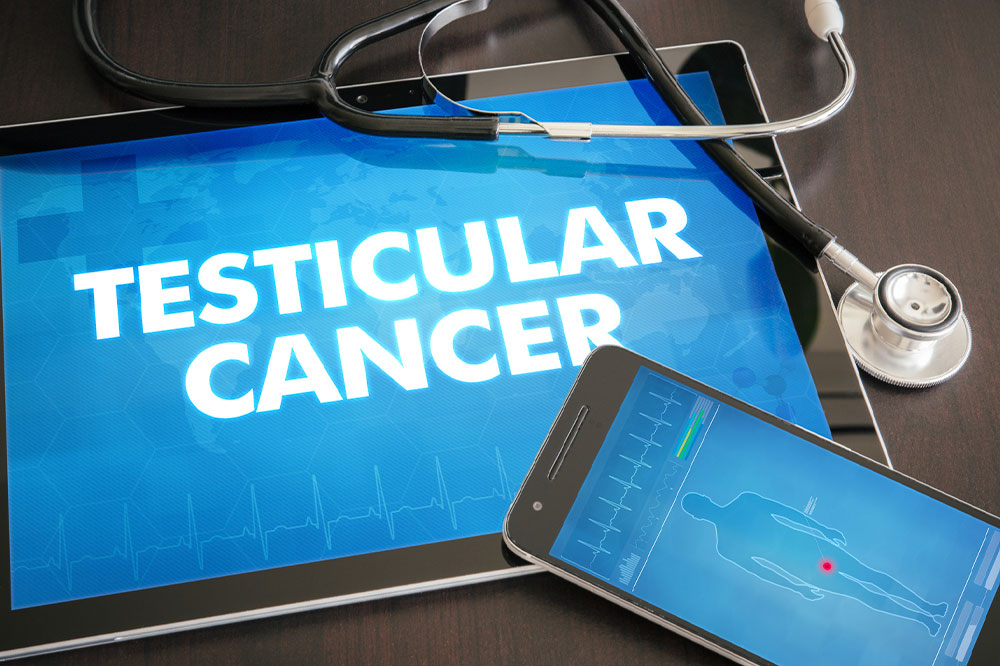A Brief Overview of Testicular Cancer
Testicular cancer is among the most prevalent cancers in men. Over the past few decades, its incidence rate has increased. While the condition can affect individuals of any age, it is more common in those between 15 and 45 years. The biochemical changes that result in this cancer start in early childhood, but the visible signs do not appear until puberty. Here is an overview of the causes, symptoms, diagnosis, and treatment of testicular cancer.
What are the causes of testicular cancer?
Any cancer begins when the cells in the body develop harmful mutations and multiply uncontrollably. In the case of testicular cancer, the problem arises in the germ cells.

What are the types of testicular cancer?
Depending on the tumor, the condition can be classified into two types: seminomas and nonseminomas. Seminoma tumors grow more slowly while nonseminomas spread rapidly. Both appear different under a microscope. Doctors may choose a treatment depending on the type of tumor.
What are the signs and symptoms?
Every disease has specific signs and symptoms that help identify it.
If the disease spreads, patients may experience anorexia, cough, shortness of breath, cervical lymphadenopathy, compression of gonadal veins, and vascular obstruction or thrombosis leading to edema in lower extremities. One may also experience nausea, vomiting, or gastrointestinal bleeding.
How to check for testicular cancer?
If a person experiences the symptoms mentioned above, they should visit a doctor to get diagnosed. Health experts may conduct the following tests to identify the condition:
Checking past health records
Doctors check whether the patient has undergone an orchiopexy, hernia repair, or other surgeries during infancy that can increase the risk of testis cancer. They also inquire whether a close relative has or has had the disease.
Physical examination
Health experts try to identify a firm mass, swelling, or tenderness in the testicles by feeling them. The presence of a firm mass indicates a lesion. Depending on the finding, patients are advised to undergo further tests.
Scrotal ultrasonography
It helps identify those lesions in the testes that are hard to find in a physical examination. Ultrasonography also helps differentiate intra-testicular from extra testicular lesions. Subtle differences in lesion images help narrow the suspicion of different types of cancer. Abdominopelvic cross-sectional imaging is a similar test that helps identify retroperitoneal lymph node disease in the case of cancer in the right testis.
What are the treatment options?
There are different stages of testicular cancer. Doctors develop a treatment strategy depending on the stage:
Stage 0
Options include close surveillance with ultrasonography and treatment with orchiectomy (a procedure to remove one or both testes) and radiotherapy. Though orchiectomy and radiotherapy are equally effective, the latter increases the risk of infertility and other cancers. Testosterone replacement therapy is the best option for further treatment.
Stage 1
In stage 1, doctors first check whether the tumor is of the seminomas or nonseminomas type. Those with seminoma tumors are recommended for an orchiectomy. However, there can be a relapse. If that happens, patients are sent for chemotherapy or primary radiotherapy, depending on their condition. Some specialists highly recommend retroperitoneal lymph node dissection (RPLND) due to its high cure rates. Those with nonseminoma tumors in stage 1 are advised surgery to remove the testes and lymph nodes in the abdomen, followed by chemotherapy.
Stage 2A and 2B
In this stage, the disease spreads to regional lymph nodes. The initial treatment strategy is orchiectomy for both seminoma and nonseminoma tumors. However, the disease relapses depending on a few risk factors. When that happens, radiotherapy and chemotherapy is advised for stage 2A seminoma, while the same chemotherapeutic regime is used without radiotherapy for stage 2B seminoma. Stage 2A and 2B nonseminoma patients are treated with chemotherapy followed by salvage resection.
Stage 2C and 3
In these stages, the disease spreads to more lymph nodes, including those in other organs like the lungs. Once again, treatment includes orchiectomy. It may be accompanied by multiple rounds of chemotherapy with different dosage levels, depending on the condition. Note that the disease can even spread to the brain. In such a situation, patients are given cranial radiotherapy to target cancer cells in the brain.
The disease is curable if diagnosed early in around 95 percent of cases. The five-year testicular cancer survival rate is 95 percent in our country. Simply put, 95 out of 100 people will live for at least five years after being diagnosed.

